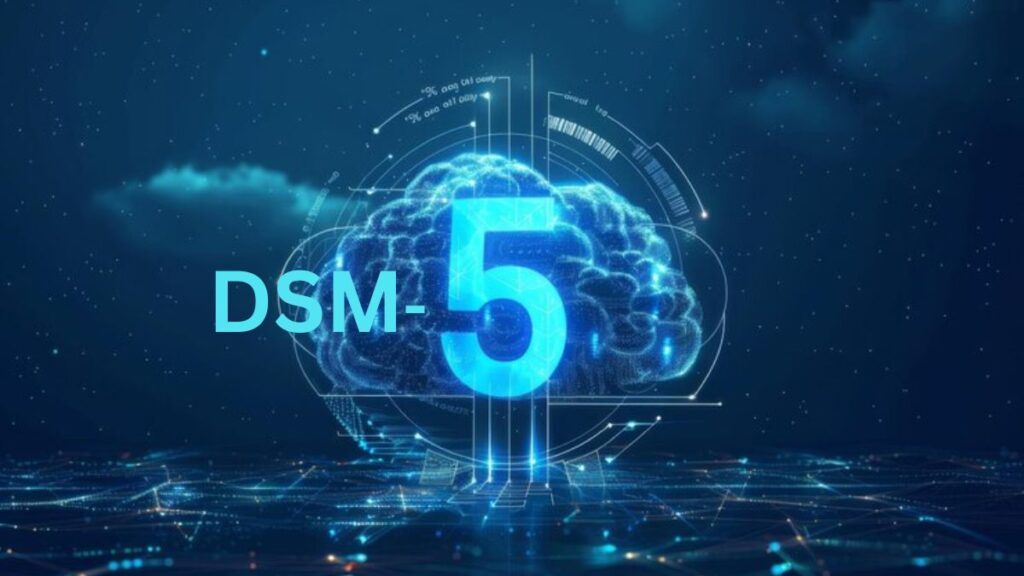The DSM-5, or the Diagnostic and Statistical Manual of Mental Disorders, Fifth Edition, is a critical tool in the field of mental health. Published by the American Psychiatric Association (APA), this manual provides standardized criteria for the classification and diagnosis of mental disorders. Clinicians, researchers, insurance companies, and policymakers rely on it to ensure consistency in diagnosing and treating psychiatric conditions. Since its release in 2013, the DSM-5 has shaped how mental health is understood and treated globally.
This article offers a comprehensive analysis of the DSM-5, its structure, significance, and controversies. We’ll dive into its historical background, its major revisions, and its impact on both clinical practice and public perception. Whether you’re a mental health professional, student, or someone curious about psychology, this guide aims to clarify everything about the DSM-5 in a clear, accessible manner.
Table of Contents
- History and Evolution of the DSM
- What Is the DSM-5?
- Key Changes Introduced in the DSM-5
- Structure and Organization of the DSM-5
- Major Categories of Mental Disorders in DSM-5
- DSM-5 and Its Diagnostic Criteria
- Cultural and Social Considerations
- Criticisms and Controversies
- The Role of DSM-5 in Clinical Practice
- Research and Academic Relevance
- DSM-5 vs. ICD-11: A Comparative Analysis
- Future Directions for the DSM
- Conclusion
History and Evolution of the DSM
The origins of the DSM can be traced back to the mid-20th century. The first edition was published in 1952 and primarily focused on psychiatric diagnoses common in institutional settings.
- DSM-I (1952): Contained about 106 disorders.
- DSM-II (1968): Expanded to include more conditions and was used during the rise of psychodynamic therapy.
- DSM-III (1980): Marked a shift toward evidence-based and symptom-focused diagnosis.
- DSM-IV (1994): Introduced multiaxial diagnostic systems and further refinement.
- DSM-5 (2013): Integrated the latest research, replaced the multiaxial system, and acknowledged cultural factors more thoroughly.
Each edition of the DSM reflects evolving understanding of mental health, scientific advancements, and societal values.
What Is the DSM-5?
The DSM-5 is a manual published by the American Psychiatric Association used to diagnose and classify mental disorders. It is considered the gold standard for psychiatric diagnosis in the United States and is widely used globally alongside the ICD (International Classification of Diseases).
It provides:
- Standardized definitions of disorders
- Diagnostic criteria
- Descriptive text including prevalence, development, risk factors, comorbidity, etc.
- Coding aligned with ICD-10-CM
The DSM primary aim is to improve diagnostic accuracy, enhance communication among professionals, and facilitate research into mental health conditions.
Key Changes Introduced in the DSM-5
The DSM-5 introduced several important changes from its predecessor (DSM-IV-TR):
Elimination of the Multiaxial System
The previous five-axis system was removed. Now, all mental health diagnoses are provided in a single axis format.
Reclassification of Disorders
- Autism Spectrum Disorder (ASD) replaced several separate diagnoses, such as Asperger’s and PDD-NOS.
- PTSD was moved from anxiety disorders to a new category called “Trauma- and Stressor-Related Disorders.”
- OCD was given its own category: “Obsessive-Compulsive and Related Disorders.”
New Disorders Added
- Disruptive Mood Dysregulation Disorder (DMDD)
- Premenstrual Dysphoric Disorder (PMDD)
- Hoarding Disorder
- Binge Eating Disorder
Dimensional Assessments
Introduced severity specifiers and dimensional assessments for certain disorders like schizophrenia and depression.
Inclusion of Cultural Considerations
Cultural Formulation Interview (CFI) helps clinicians consider cultural background in diagnosis.
Structure and Organization of the DSM-5
The DSM-5 is organized into three main sections:
Section I: Basics
- Explains how to use the manual
- Describes DSM-5’s structure and changes from DSM-IV
Section II: Diagnostic Criteria and Codes
- Contains the diagnostic criteria for all recognized mental disorders
- Disorders are grouped by shared symptoms and neurobiological basis
Section III: Emerging Measures and Models
- Assessment tools
- Cultural Formulation Interview (CFI)
- Alternative models for personality disorders
Expand your knowledge and check out more posts on our blog!
Major Categories of Mental Disorders in DSM-5
Here are the core categories of disorders outlined in the DSM-5:
- Neurodevelopmental Disorders
ADHD, Autism Spectrum Disorder, Learning Disabilities - Schizophrenia Spectrum and Other Psychotic Disorders
- Bipolar and Related Disorders
- Depressive Disorders
- Anxiety Disorders
- Obsessive-Compulsive and Related Disorders
- Trauma- and Stressor-Related Disorders
- Dissociative Disorders
- Somatic Symptom and Related Disorders
- Feeding and Eating Disorders
- Elimination Disorders
- Sleep-Wake Disorders
- Sexual Dysfunctions
- Gender Dysphoria
- Disruptive, Impulse-Control, and Conduct Disorders
- Substance-Related and Addictive Disorders
- Neurocognitive Disorders
- Personality Disorders
- Paraphilic Disorders
- Other Mental Disorders and Conditions for Further Study
Each category includes diagnostic criteria, prevalence, differential diagnosis, and comorbidity data.
DSM-5 and Its Diagnostic Criteria
The diagnostic criteria in DSM-5 are specific, symptom-based, and include the following elements:
- Essential features: Core symptoms needed for diagnosis
- Duration: How long symptoms must persist
- Impairment: The extent to which the disorder interferes with daily life
- Exclusion: Conditions or situations that rule out the diagnosis
These standardized guidelines reduce subjectivity and increase diagnostic reliability.
Cultural and Social Considerations
The DSM-5 integrates culture throughout the manual:
- Cultural Formulation Interview (CFI): A semi-structured tool to assess cultural context
- Recognizes that symptoms may manifest differently based on cultural norms
- Acknowledges how stigma, language, and traditions influence diagnosis and treatment
This shift toward cultural awareness improves equity in mental health services.
Criticisms and Controversies
Despite its widespread use, DSM5 has been subject to criticism:
Medicalization of Normal Behavior
Some argue the manual turns ordinary behaviors into medical conditions (e.g., grief vs. depression).
Pharmaceutical Influence
Concerns exist about ties between DSM-5 panel members and the pharmaceutical industry.
Reliability Issues
Certain disorders still lack consistent interrater reliability, leading to diagnostic discrepancies.
Cultural Bias
Although improved, some feel DSM-5 remains rooted in Western medical models.
Overlapping Criteria
Many disorders share symptoms, making differential diagnosis difficult.
These criticisms have sparked ongoing debates in psychiatry and psychology communities.
The Role of DSM-5 in Clinical Practice
For clinicians, the DSM-5 serves multiple critical purposes:
- Accurate Diagnosis: Provides guidelines to identify mental health conditions
- Treatment Planning: Helps design tailored therapeutic strategies
- Insurance Reimbursement: Used for billing and coding mental health services
- Communication: Offers a common language among professionals
It’s an indispensable tool in hospitals, clinics, private practices, and research settings.
Research and Academic Relevance
In academic and research settings, DSM-5’s provides:
- A foundation for epidemiological studies
- Standardized classification for controlled trials
- A common reference in psychology and psychiatry curricula
- Data for public policy and mental health funding
Its use ensures scientific rigor and consistency across investigations.
DSM-5 vs. ICD-11: A Comparative Analysis
DSM-5:
- Published by the American Psychiatric Association
- Focuses on mental health conditions
- More commonly used in the U.S.
- Detailed narrative descriptions
ICD-11:
- Published by the World Health Organization (WHO)
- Covers all diseases, not just mental disorders
- Used globally
- Free and publicly accessible
While both systems are used interchangeably, DSM-5’s often provides greater clinical detail for mental health professionals.
Future Directions for the DSM
As mental health understanding evolves, future DSM versions may include:
- More dimensional and spectrum-based classifications
- Greater integration of neuroscience and genetics
- AI and digital tools for symptom tracking
- Continued emphasis on cultural and environmental context
- Public transparency in revision processes
The DSM will likely continue adapting to scientific discoveries, societal changes, and clinical feedback.
The DSM-5’s Impact on Mental Health Awareness
Over the last decade, DSM-5 has contributed significantly to improving mental health literacy among the general public. With increased discussions around conditions like autism, ADHD, bipolar disorder, and PTSD, the DSM5 has helped formalize the language used around mental health. More people now recognize symptoms, identify their struggles, and seek professional help.
Social media campaigns, TV shows, documentaries, and celebrity endorsements have contributed to mental health destigmatization—but the DSM5 provides the scientific backbone that validates these conditions.
For example:
- The reclassification of autism spectrum disorder brought clarity to diagnoses that previously felt fragmented.
- The inclusion of hoarding disorder helped differentiate it from OCD, allowing for more targeted treatments.
- The addition of binge eating disorder gave visibility to a previously misunderstood and underdiagnosed condition.
This cultural shift toward openness would not be as grounded without a structured reference like the DSM-5’s .
Using DSM-5 in Therapy and Counseling
Mental health professionals rely on the DSM-5 daily, not just for diagnosis, but also for therapeutic planning. Here’s how it influences treatment:
Formulating Treatment Goals
Once a diagnosis is confirmed, the DSM-5 helps identify:
- Core symptoms to target
- Severity level (mild, moderate, severe)
- Duration and progression
This shapes cognitive-behavioral therapy (CBT), medication choices, and other interventions.
Insurance Reimbursement
Insurance companies require an official diagnosis for coverage. DSM5 codes align with ICD-10-CM, making it essential for practitioners to use DSM-5 language in documentation and claims.
Monitoring Progress
Clinicians use DSM-5’s criteria to:
- Measure treatment effectiveness
- Adjust treatment plans over time
- Decide when remission or recovery has been achieved
The manual’s consistency is vital in multi-clinician or interdisciplinary settings.
DSM-5 Text Revision (DSM-5-TR)
In 2022, the DSM5-TR (Text Revision) was released. Though not a full new edition like DSM-6, it included important updates:
- New disorder: Prolonged Grief Disorder
- Updated terminology and descriptions for better clarity
- Refined cultural and race-related considerations
- Inclusion of prevalence data based on new studies
The DSM-5-TR demonstrates the APA’s commitment to keeping diagnostic standards aligned with the latest research and societal trends.
Curious to learn more? Dive into the rest of our blog for helpful tips and insights!
Educational Value of the DSM-5
The DSM-5 is extensively used in academic settings:
For Students:
- Psychology and psychiatry students use it to learn how to differentiate between disorders.
- Case studies and simulations often require using DSM-5’s criteria for practice diagnosis.
For Researchers:
- Ensures standardization in clinical trials.
- Helps determine inclusion and exclusion criteria.
- Offers detailed epidemiological and comorbidity data.
Professors frequently build curricula around its structure to introduce students to real-world applications of psychological theory.
Benefits of the DSM-5
Let’s highlight why DSM5 remains a cornerstone in mental healthcare:
1. Consistency Across Clinicians
It allows different professionals to diagnose the same way using a shared system.
2. Evidence-Based
Diagnostic criteria are developed from rigorous scientific studies and clinical experience.
3. Facilitates Early Detection
More precise symptom criteria make it easier to detect disorders earlier.
4. Improves Communication
Patients, clinicians, researchers, and insurers all use the same language, reducing confusion.
5. Adaptive System
While not perfect, DSM5 is updated to reflect new science, making it a living document.
Drawbacks of the DSM-5
No system is without limitations. Here are some issues commonly raised:
Labeling Concerns
People often feel stigmatized by labels like “disorder” or “illness,” even when the diagnosis helps in treatment.
Diagnostic Inflation
Critics argue that DSM5 may over-pathologize behavior—turning natural emotional responses into mental health diagnoses.
Western Bias
Some argue the DSM reflects American or Western norms, which may not apply across cultures or communities.
Limited Consideration for Context
DSM-5’s focuses on symptoms rather than causes or life context, potentially overlooking social or environmental factors.
Despite these, many professionals consider the DSM5 to be the best existing diagnostic tool when used responsibly.
DSM-5 and the Law
The DSM5 is also important in legal and forensic contexts:
In Courtrooms:
- Used in insanity defenses, competency evaluations, and custody cases
- Provides objective definitions that can support expert testimony
In Prisons and Rehabilitation:
- Mental health assessments are based on DSM5 criteria to determine treatment needs
- Ensures inmates with mental illness are properly diagnosed and treated
The manual helps legal professionals make decisions with more standardized psychological input.
DSM-5 Across Cultures
One of the most progressive steps in DSM-5’s was its effort to integrate cultural competence:
- Cultural Concepts of Distress (CCD): Identifies mental health syndromes unique to certain cultures
- Cultural Formulation Interview (CFI): A set of 16 questions to assess the impact of cultural background on mental health
This inclusion is essential in today’s globalized world where mental health treatment needs to be culturally sensitive and individualized.
The Role of Technology in DSM-5’s Future
As mental health care becomes more tech-driven, the DSM5 may evolve with the help of AI, big data, and digital tools:
- AI for Diagnosis: Apps and platforms may one day help screen DSM-5’s symptoms more quickly.
- Machine Learning: Patterns of co-occurrence among disorders can inform more personalized care.
- Teletherapy Platforms: Online therapy services rely on DSM5 coding for prescriptions and treatment plans.
The next iteration of DSM might even feature interactive or digital-only formats, optimized for clinical software and cloud-based EMRs (Electronic Medical Records).
DSM-6: What to Expect in the Future
While there is no release date for DSM-6, discussions have begun about its potential direction:
- Greater emphasis on biological markers (e.g., genetics, neuroimaging)
- Integration of environmental and social determinants of health
- Broader global input for cultural inclusivity
- More dimensional models rather than strict categories
- Use of predictive analytics for risk assessment
The shift may move psychiatry closer to personalized medicine, where each diagnosis considers biology, environment, and personal experience.
Case Study: DSM-5 in Action
Let’s look at a hypothetical example to understand how DSM5 is used:
Patient: John, 29 years old
Symptoms:
- Trouble sleeping
- Loss of interest in hobbies
- Constant fatigue
- Thoughts of worthlessness
- Suicidal ideation
DSM-5 Diagnostic Process:
Using the manual, the clinician compares John’s symptoms against the criteria for Major Depressive Disorder:
- Must show 5+ symptoms during a 2-week period
- Must cause significant impairment
- Symptoms cannot be due to substance use or another condition
John meets all criteria and receives a diagnosis. A treatment plan involving CBT and SSRIs is then crafted.
Ethical Use of the DSM-5
Clinicians are trained to use the DSM5 ethically and with cultural humility. Misuse or overdiagnosis can lead to:
- Unnecessary medication
- Inappropriate treatment plans
- Stigma and self-stigmatization
- Legal or insurance complications
Responsible use involves seeing DSM-5’s as a tool, not a verdict, and always considering the full person behind the symptoms.
Conclusion
The DSM-5 stands as a monumental achievement in psychiatric medicine and psychology. It offers a structured, evidence-based framework for identifying and understanding mental disorders. Despite its imperfections and ongoing debates, the DSM5 plays an irreplaceable role in modern mental health care.
From its historical evolution to its present-day relevance, the DSM-5’s shapes clinical practice, guides academic research, and informs public policy. As our understanding of the human mind deepens, the DSM will remain central to how we define, diagnose, and treat mental health conditions across diverse populations.
Did you find this article helpful? Check out the rest of our site for more great content!
5 Unique FAQs About DSM-5
1. What is the DSM-5?
The DSM-5’s is a diagnostic manual published by the American Psychiatric Association that provides criteria for identifying mental disorders.
2. How is DSM-5 different from previous versions?
DSM-5’s removed the multiaxial system, introduced new disorders, and emphasized a more dimensional and culturally sensitive approach to diagnosis.
3. Who uses the DSM-5?
Psychiatrists, psychologists, social workers, researchers, and insurance providers use the DSM5 for diagnosis, treatment planning, and billing.
4. Is the DSM-5 used internationally?
While mainly used in the U.S., many countries refer to DSM-5, though ICD-11 is the global standard endorsed by the WHO.
5. Can the DSM-5 be revised or updated?
Yes, the DSM5 has been followed by updates (like DSM-5-TR), and future editions will incorporate new research and cultural considerations.







